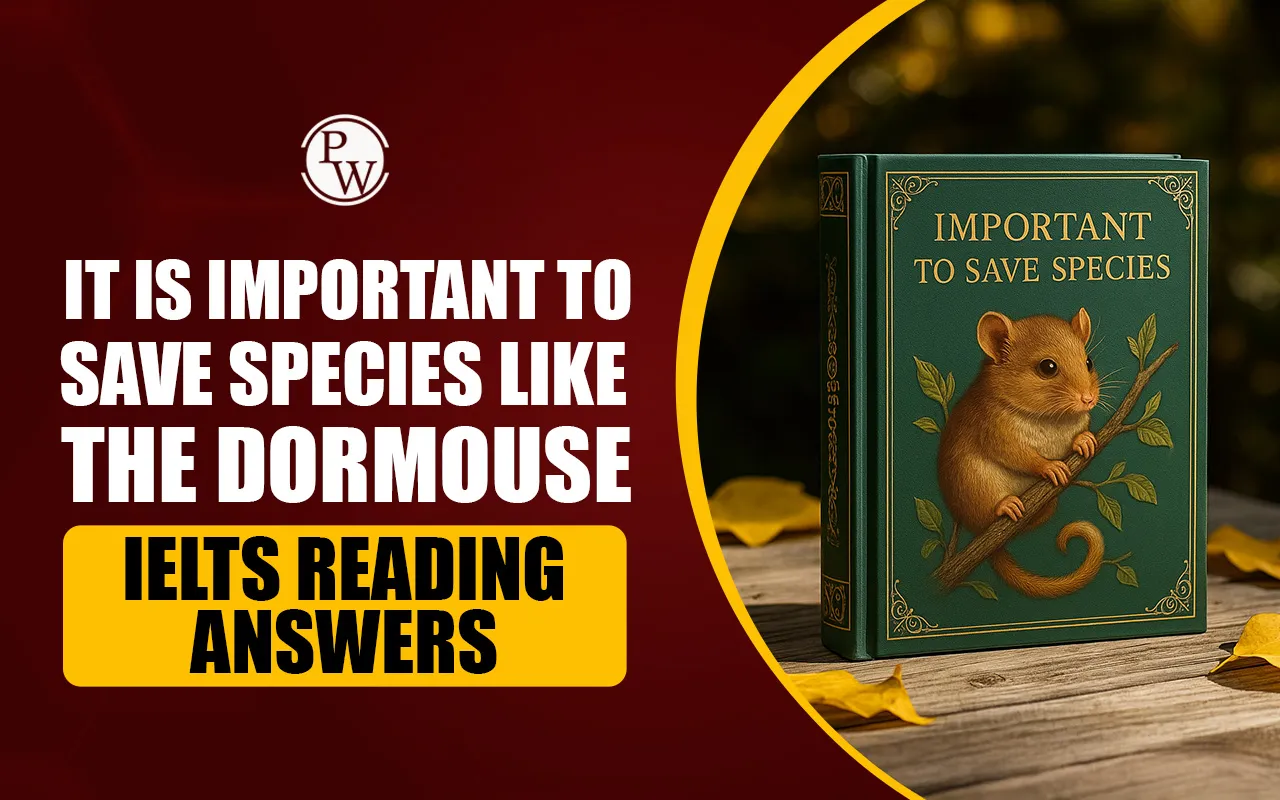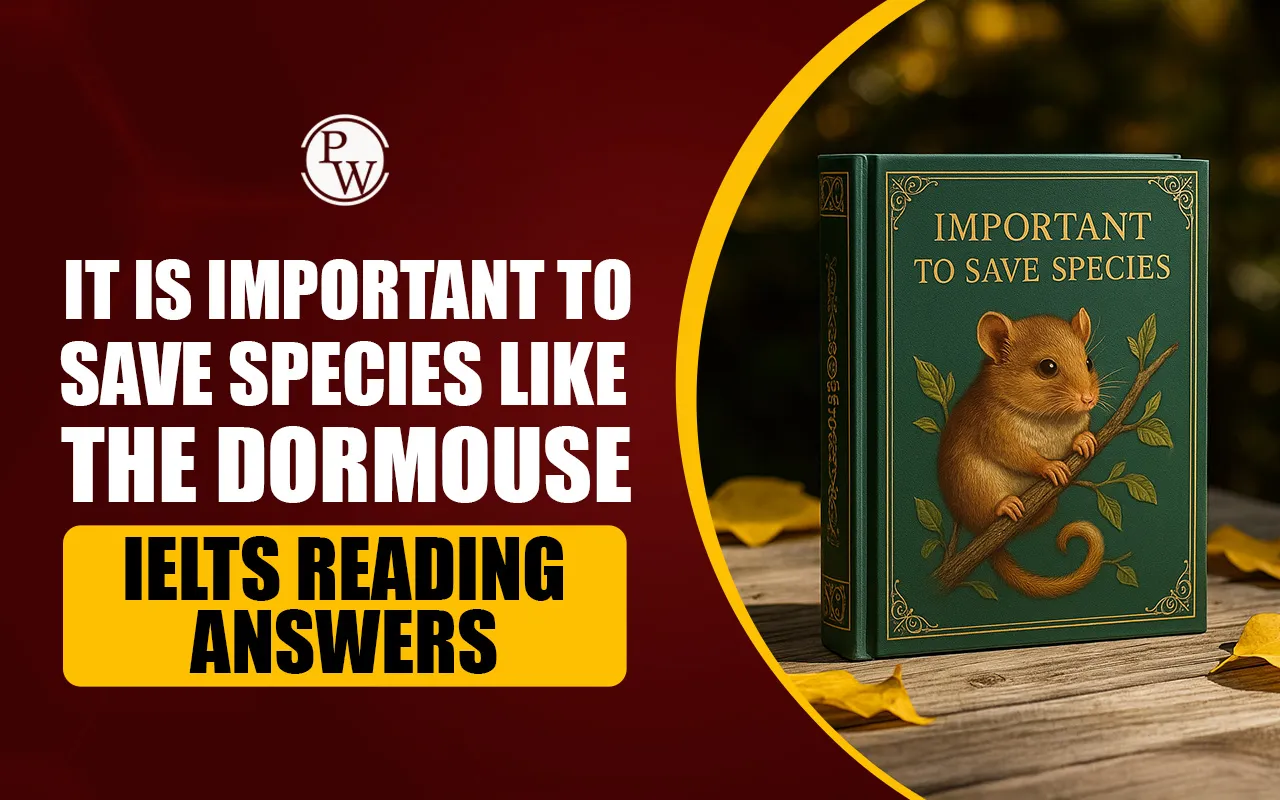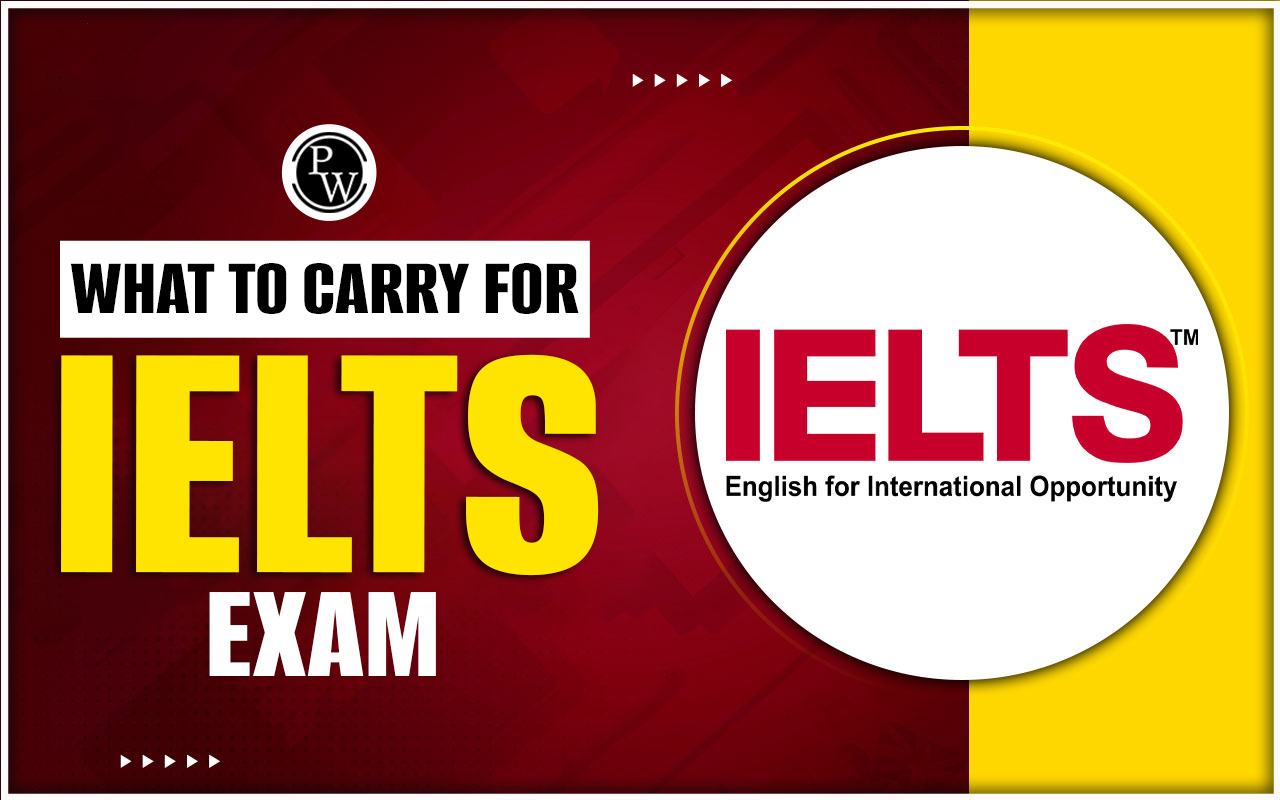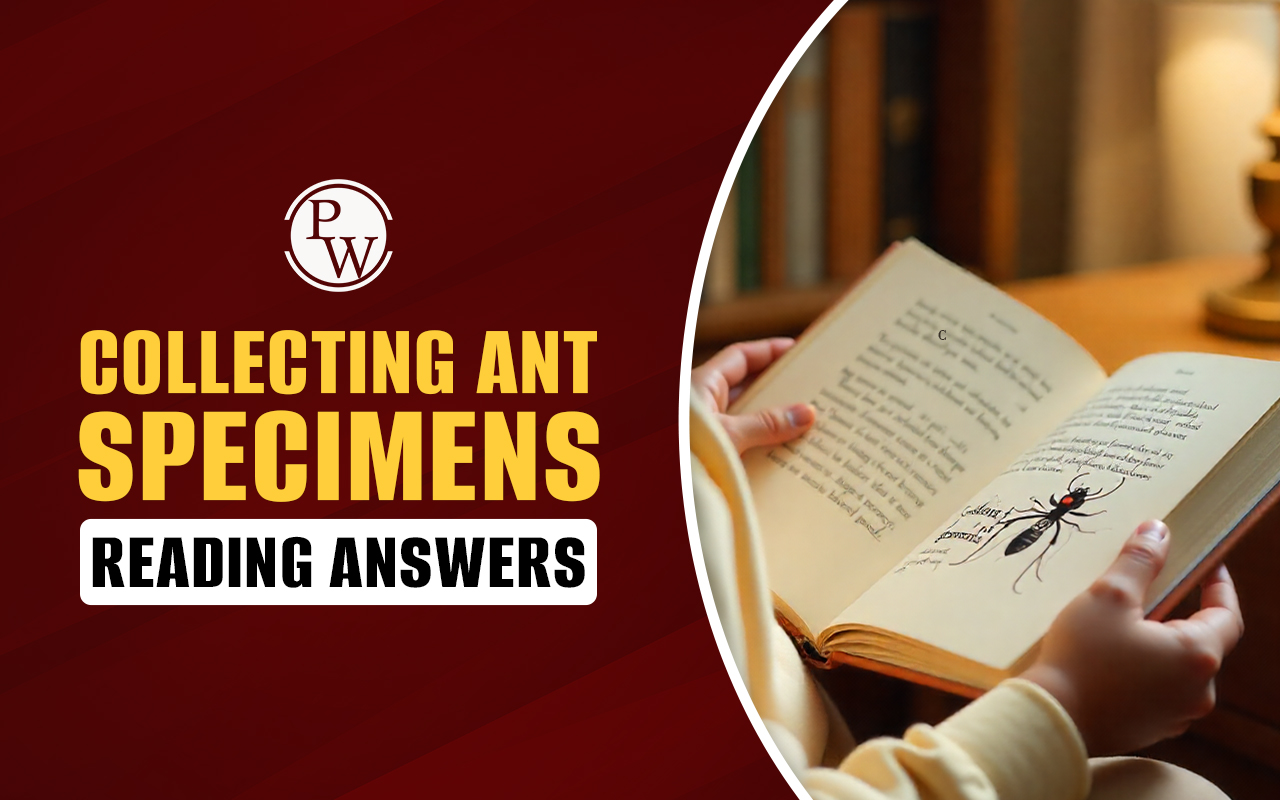

It is Important to Save Species like the Dormouse IELTS Reading Answers: Every year, the IELTS exam features academic reading passages designed to test a candidate’s ability to identify key ideas, locate detailed information, and understand complex language. IELTS reading topics often follow patterns, so practising common themes like It is Important to Save Species like the Dormouse can significantly improve your performance.
This IELTS Reading passage includes a total of 13 questions, such as IELTS summary completion, multiple-choice, and matching features. In this guide, you will find the full passage along with carefully explained answers to help you tackle similar reading questions in the IELTS Reading Test.
Free IELTS Reading Practice Tests
It is Important to Save Species like the Dormouse IELTS Reading Passage
You should spend about 20 minutes on Questions 1-13 which are based on the Reading Passage below.
Why it is Important to Save Species like the Dormouse
-
More than 100 years after they were last recorded by naturalists in the Wensleydale valley in northern England rare dormice have returned to a secret woodland location there. Twenty breeding pairs of rare hazel dormice were recently reintroduced as part of a national scheme to reverse the decline of one of Britain’s most threatened mammals. This reintroduction led by the People’s Trust for Endangered Species (PTES) and supported by a coalition of conservation groups is the 22nd in the last 23 years. Dormice depend on well managed woodlands and healthy connected hedgerows for their survival. But changes in land use since the 1940s have been so dramatic that the dormice that remain have limited living space and are increasingly isolated.
-
Ahead of the release the PTES found a site of dense good quality woodland while the captive bred dormice waited in quarantine. After examination by vets the dormice were placed in their soft release accommodation in pairs. This consisted of secure wooden boxes fitted to trees and surrounded by a meter square cage. For 10 days the dormice were checked and given food daily then a small opening was made allowing them the freedom to explore while retaining the security of the cage. Everything was removed in October when the animals started preparing to go into hibernation for the winter.
-
‘The hope is that we have a free living population in the woods but we won’t know how they have fared until next year’ said lan White of the PTES. Unsuitable habitat, captive bred animals and incorrect management could all ruin the chances of success of such schemes. However, a distinctive factor of this release White explained is the intention of linking up with another released dormouse population 3 miles away by managing the land between. The goal is to create a wider landscape for dormice and that will make the population more robust.
-
Woodlands were traditionally managed through regularly cutting back certain trees to ground level to stimulate growth and provide firewood or timber for local residents. This system was known as coppicing, and as an added bonus it happened to provide varied food and plenty of light for dormice. But the practice has been largely lost with much remaining woodland sliced up by roads, railways and fields. England also had more than 50% of its hedgerows dug up between 1946 and 1993 as small fields were combined to make larger ones and farmland was sold for building projects. All this has had an adverse effect on dormouse populations.
-
‘It’s very important that we reintroduce the dormouse because they are a good species to get people involved with conservation’, said White. ‘They are a fascinating species that is rare, but you can still see. They promote good woodland management and what’s good for dormice is good for a large range of species’.
-
Helen Meech, the director of Rewilding Britain, an organisation campaigning to restore lost species and habitats to the British countryside said that such reintroductions would increase people’s familiarity with living with more wild animals once again. People’s everyday wildlife experience is becoming limited to seeing grey squirrels and pigeons, she explained. ‘We are increasingly disconnected from nature. In 30 to 40 years’ time, we might get to the point where we can start to think about bringing back wolves, bison or moose, but let’s start with species that will have a lighter impact for now.”
-
Over centuries, Britain has lost many key species that are critical for healthy ecosystems. Here are some of the species conservationists have reintroduced or are proposing to reintroduce.
-
The lynx is believed to have disappeared from Britain about 1000 years ago. Experts say it would help control the fast-growing population of red deer, allowing forests to regenerate and support greater biodiversity. The preference of the lynx, a shy animal to stay in its woodland habitat, would make a threat to livestock of humans unlikely.
-
After an absence of 400 years beavers are back in Britain. The Devon Beaver project cites improvements in biodiversity and water after the reintroduction of a pair near Okehampton in 2011. Scotland’s first reintroduction in Knapdale forest in 2008 was hailed an outstanding success but an unlicensed free living population in the river Tay has caused problems.
-
Lost to Britain in the 1700s, the wolf is the most controversial species proposed for reintroduction given its potential to kill agricultural livestock. But they are critical to the restoration of ecosystems that have been overgrazed by deer. Despite their fearsome reputation they present a low risk to people. Because of the space a wolf population would need the Scottish Highlands would be an obvious place for their reintroduction and could generate millions of pounds in tourism.
-
The sea eagle also known as the white tailed eagle was driven to extinction in Britain earlier this century. A reintroduction programme has seen it return to the Inner Hebrides island of Mull Proposals to bring it back to the east of England failed following concerns from landowners about the threat to livestock. Successful schemes in Europe have offered compensation for this.
-
Then there is the wild boar which disappeared in the 13th century because of hunting. They increase biodiversity and create space for trees and plants to grow but can cause damage to crops and gardens. The species has been quietly re-establishing itself in the woodlands of Britain for several decades.
Also Read:
It is Important to Save Species like the Dormouse IELTS Reading Questions
Questions 1–4
Complete the summary below.
Choose NO MORE THAN TWO WORDS from the passage for each answer.
The Return of the Dormouse
After more than a century, dormice have returned to the 1. __________ in northern England through a reintroduction effort. The People’s Trust for Endangered Species has worked with other organisations on a total of 2. __________ releases over the past two decades. These animals rely on suitable woodlands and 3. __________ for survival, but habitat changes have made them vulnerable. Before being released, dormice were kept in quarantine and examined by 4. __________ to ensure their health.
Questions 5–9
Choose the correct letter, A, B, C or D.
5. What is the main purpose of the dormouse reintroduction scheme?
A. To create a tourist attraction
B. To study wild animal migration
C. To restore and stabilise the species population
D. To test a new forest management method
6. What was unique about this particular dormouse release according to Ian White?
A. It used a different type of cage
B. It aimed to connect with another dormouse group
C. It included radio tracking of animals
D. It was the first release in over 50 years
7. What does the passage say about coppicing?
A. It is a modern conservation technique
B. It reduces biodiversity in woodlands
C. It naturally benefited dormice
D. It was banned in the 1940s
8. According to Helen Meech, what is a likely benefit of species reintroduction?
A. Improving crop yields
B. Reconnecting people with nature
C. Reducing human population density
D. Increasing public funding for construction
9. Why is the reintroduction of wolves considered controversial?
A. They compete with native birds
B. They require expensive veterinary care
C. They are known to attack humans frequently
D. They might threaten farm animals
Questions 10–13
Match each species with the correct statement below.
Write the correct letter A–F in boxes 10–13.
Species
A. Lynx
B. Beaver
C. Wolf
D. Sea eagle
E. Wild boar
F. Dormouse
Statements
10. Has re-established itself slowly without official approval.
11. Could help reduce red deer numbers.
12. Was reintroduced successfully but caused some issues in one region.
13. Its return project failed in one part of England due to landowners’ concerns.
| Section wise IELTS Band Score Links | |
|---|---|
| IELTS Reading Band Score | IELTS Listening Band Score |
| IELTS Speaking Band Score | IELTS Writing Band Score |
It is Important to Save Species like the Dormouse IELTS Reading Answers with Explanations
Questions 1–4: Summary Completion
|
Question |
Answer |
Answer Location & Reference |
Explanation |
|---|---|---|---|
|
1 |
Wensleydale |
Paragraph 1: “...in the Wensleydale valley in northern England...” |
Wensleydale is the place where dormice were reintroduced. |
|
2 |
22 |
Paragraph 1: “...is the 22nd in the last 23 years.” |
The 22nd reintroduction scheme is clearly mentioned. |
|
3 |
hedgerows |
Paragraph 1: “...and healthy connected hedgerows for their survival.” |
Dormice need connected hedgerows for survival. |
|
4 |
vets |
Paragraph 2: “After examination by vets...” |
Dormice were examined by vets before being released. |
Questions 5–9: Multiple-Choice Questions
|
Question |
Answer |
Answer Location & Reference |
Explanation |
|---|---|---|---|
|
5 |
C |
Paragraph 1: “...scheme to reverse the decline of one of Britain’s most threatened mammals.” |
The main purpose is conservation and reversing population decline. |
|
6 |
B |
Paragraph 3: “...linking up with another released dormouse population 3 miles away...” |
This release is unique due to its aim of connecting two populations. |
|
7 |
C |
Paragraph 4: “...provide varied food and plenty of light for dormice.” |
Coppicing helped dormice by creating a better habitat. |
|
8 |
B |
Paragraph 6: “...increase people’s familiarity with living with more wild animals...” |
Reintroductions aim to reconnect people with nature. |
|
9 |
D |
Paragraph 7: “...given its potential to kill agricultural livestock.” |
The wolf is controversial because of its threat to farm animals. |
Questions 10–13: Matching Features
|
Question |
Answer |
Answer Location & Reference |
Explanation |
|---|---|---|---|
|
10 |
E (Wild boar) |
Paragraph 8: “...has been quietly re-establishing itself in the woodlands of Britain...” |
Wild boars are returning naturally without formal reintroduction. |
|
11 |
A (Lynx) |
Paragraph 6: “...would help control the fast-growing population of red deer...” |
Lynx reintroduction would benefit forests by managing deer. |
|
12 |
B (Beaver) |
Paragraph 7: “...an unlicensed free living population in the river Tay has caused problems.” |
Problems arose from uncontrolled beaver populations. |
|
13 |
D (Sea eagle) |
Paragraph 8: “...failed following concerns from landowners about the threat to livestock.” |
Farmers opposed reintroduction due to risk to animals. |
Guidance to PW
The IELTS Online Courses is a great initiative taken by Physics Wallah to help IELTS aspirants better prepare for the exam. Follow our below pages to learn more about the IELTS exam.| What is IELTS Exam? | Documents Required for IELTS Registration |
| IELTS exam eligibility requirements | IELTS Exam Fees |
| IELTS test results | IELTS Exam Pattern |
It is Important to Save Species like the Dormouse IELTS Reading Answers FAQs
What is the main aim of reintroducing dormice in Britain?
Why are hedgerows and woodlands important for dormice survival?
How does coppicing benefit dormice habitats?
What are some other animals mentioned for reintroduction in the passage?
Why are some species reintroduction efforts considered controversial?












